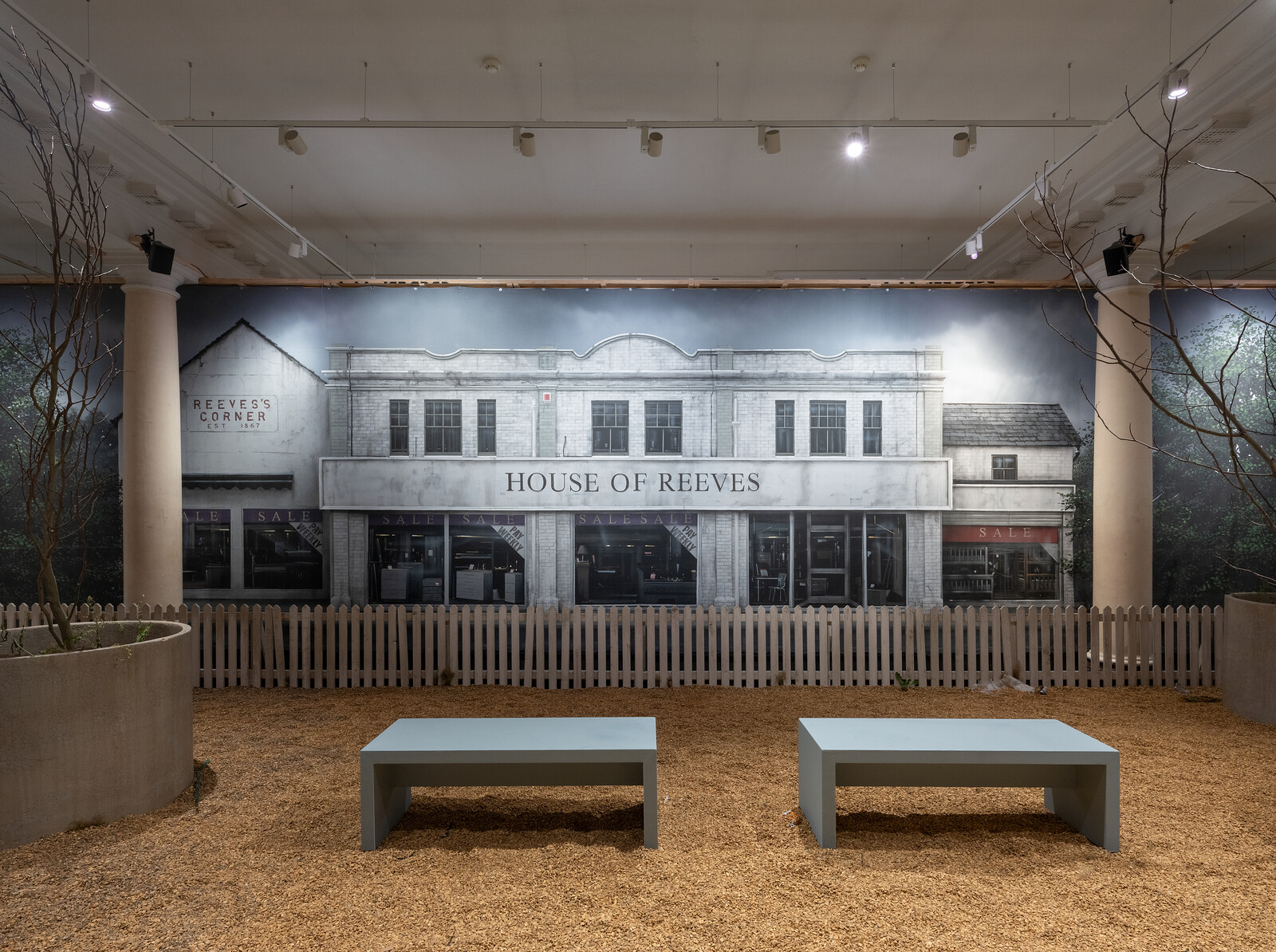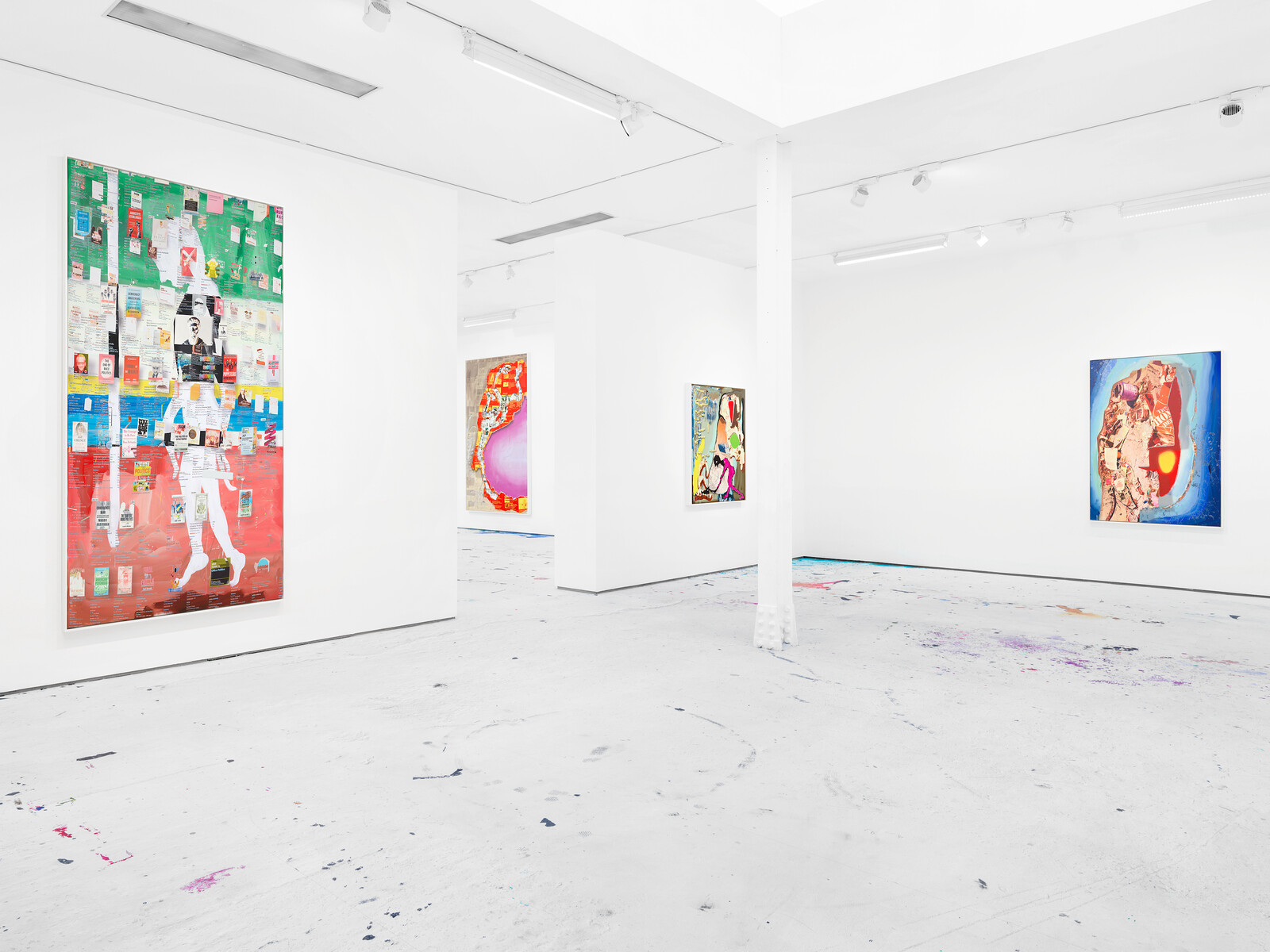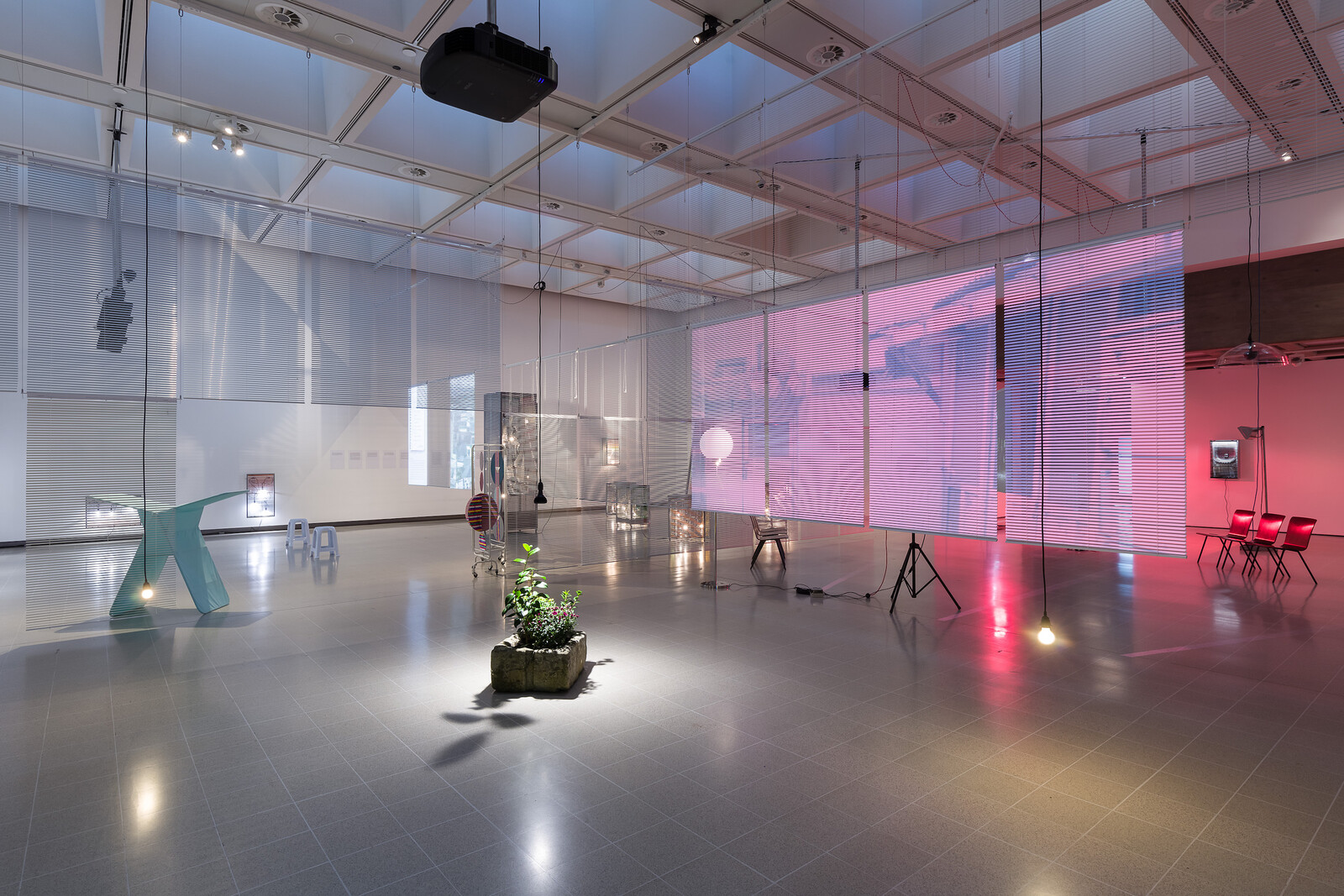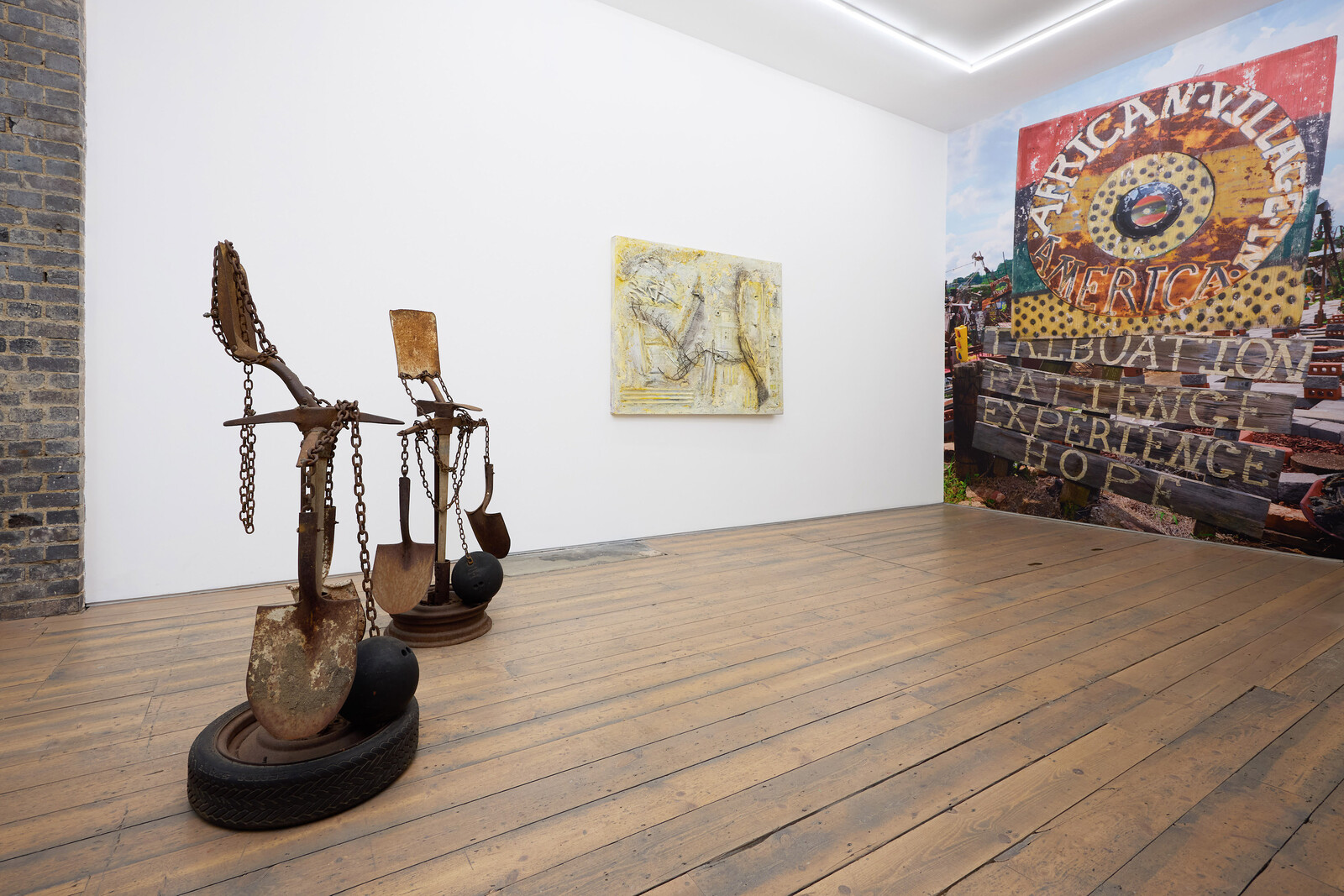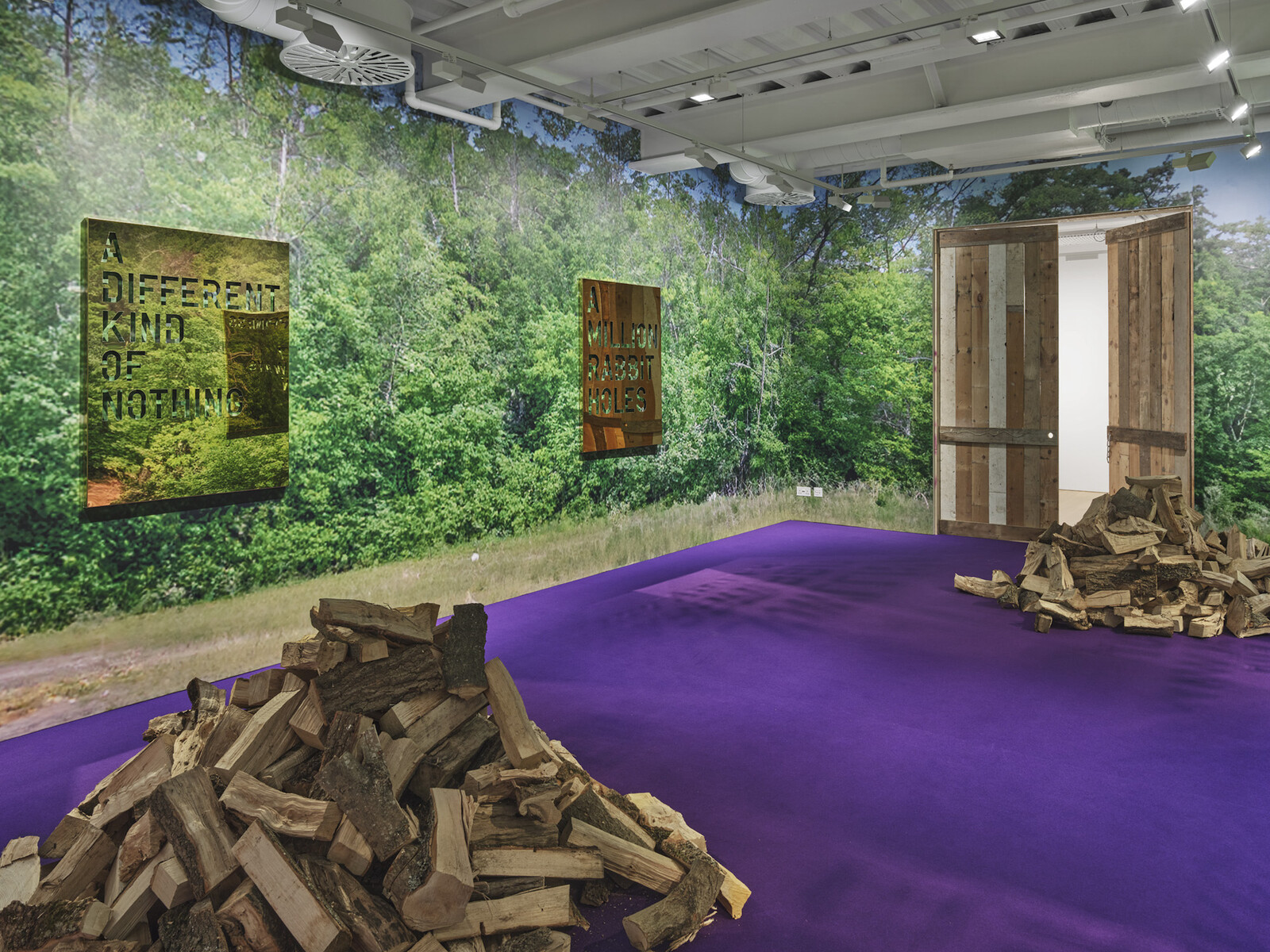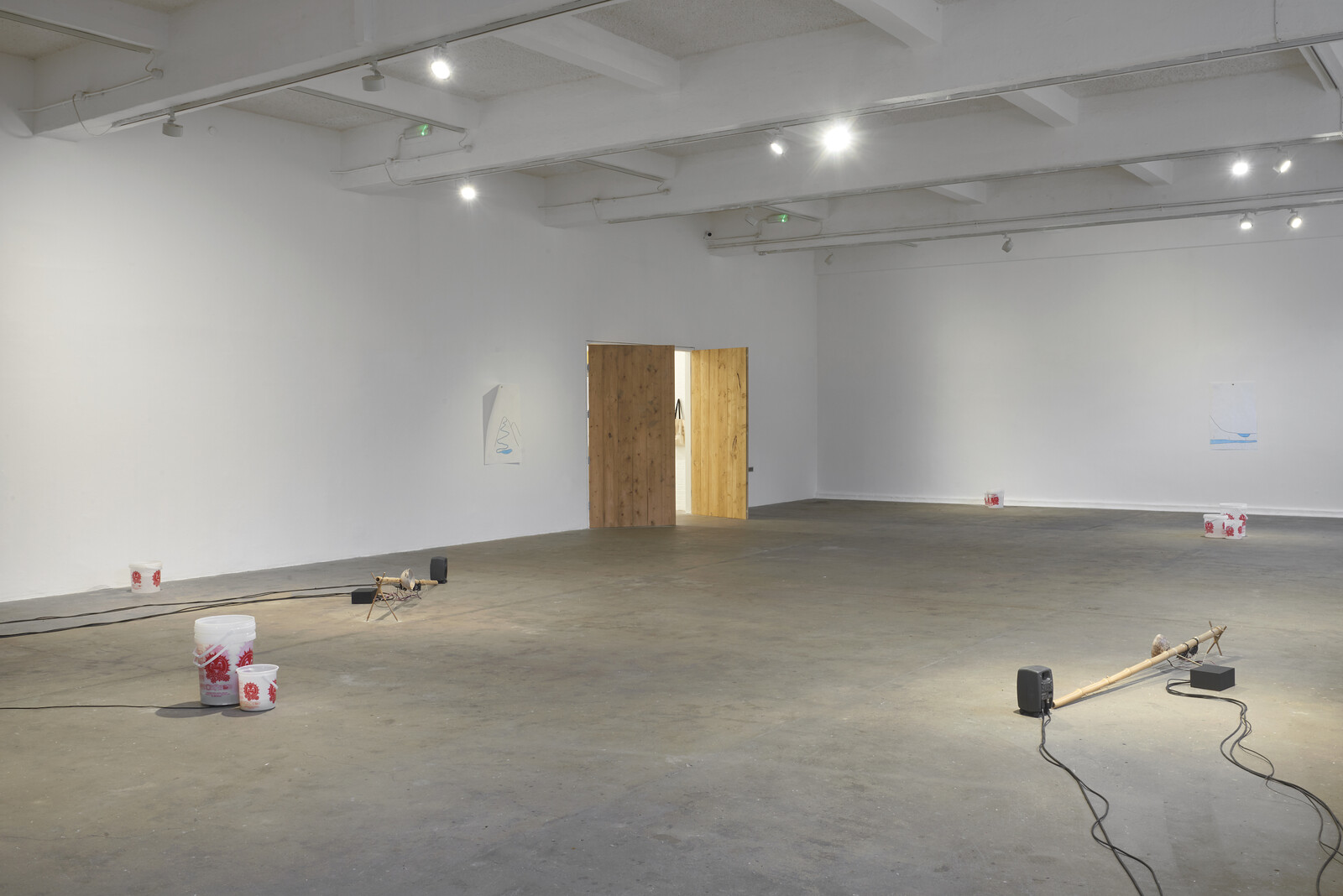A BlackBerry phone in a vitrine plays a short video: a nighttime shot of a building on fire. The scene is familiar to anyone who was in London during the 2011 unrest that grew out of the police shooting of Mark Duggan: the House of Reeves furniture store in flames, caught on both shaky handheld phone and swooping helicopter footage, broadcast and shared over and over. In the next room in Imran Perretta’s “A Riot in Three Acts” at Somerset House is a meager set, as if belonging to an abandoned play, with a few benches plonked amongst pebbles strewn with rubbish, a large backdrop painted with a nondescript shopfront.
This is Reeves Corner in Croydon, where the burnt-out building once stood. A soundtrack of swelling strings fills the room—a quick-paced march, followed in a later section by soaring high notes—and adds narrative tension and the hope of redemption to Perretta’s non-film. Melodrama is part of the point here: while listening, I’m creating a mental film loaded with scenes shaped by that news footage, and bumped up with film conventions. History repeats itself, Perretta’s restaging suggests, first time as tragedy, second time as Hollywood special.
The causes of the 2011 unrest—police brutality, defunded social services, staggering inequality—were quickly forgotten amidst outrage at theft and “destruction of property” by those quickly labeled as rioters and looters. The current prime minister, Keir Starmer, was at that time head of the Crown Prosecution Service, overseeing 24-hour courts that gave prison time to those found guilty of taking a case of water, some ice cream, and others who had merely posted on Facebook. How we recount events from the past carries meaning in the present. Starmer’s government was elected just a few months ago on a slogan of “change”; he followed the same swift judicial playbook when dealing with the far-right, anti-immigration protests and riots that swept the country this summer. Perretta’s empty set is a reminder that the underlying causes of the unrest it restages, and the narratives that help shape responses to those causes, remain unchanged.
Perretta’s painted corner set the scene for a number of shows in London during Frieze week that also employ backdrops to conjure another time or place: Alabama, Los Angeles, New York, Seoul… anywhere but here, now. Collectively, they seemed like a tacit admission that much of the art on display at the capital wasn’t up to the task of facing the present moment.
Urs Fischer covered the floor of Sadie Coles’ gallery in a photographic replica of his LA studio’s gray concrete floor, complete with scrapes, scuffs, streaks of paint, and oversized sandal prints (the walls also happen to be filled with forgettable paintings of collaged bric-a-brac); at the Hayward Gallery, Haegue Yang’s Sadong 30 (2006) reprises an exhibition the artist staged in an abandoned family home just outside Seoul. The original is evoked by a collage of photographs from the building on the corner wall, doubling the present installation—a scattering of colorful origami stars and polyhedrons set among a tangle of fairy lights, an assortment of jars and bottles filled with liquids and pickling vegetables, and a clothes horse covered in blue cloth—with in-situ documentation.
In the back room of Edel Assanti’s group show “The Stars Fell on Alabama: Southern Black Renaissance,” two small figures square up to visitors. With shovels for heads and arms, the rusted chains around their necks are weighed down by the weathered bowling balls on their hubcap feet. Joe Minter’s Nine Pound Steel (diptych) (1989) sits next to Thornton Dial’s The Sun Used to Come Up in the Morning (2013), a yellowing canvas that looks like the bottom of a dried-out creek, with crumpled bits of wire mesh and metal sheets painted a burnt-out gray tinged with muddy color. Towering over them is a photograph printed onto the wall: it shows a hand-painted sign reading “African Village in America” with the words “Tribulation, Patience, Experience, Hope” underneath. Barely visible beyond is a huddle of signs and flags and scrap. The show is framed as gathering Southern examples of the wider African-American tradition of artists’ informal yard shows, and some might recognize the outdoor installation that Minter has been building in his Birmingham, Alabama backyard for the past thirty years. But cropped to squeeze around a doorway, the image isn’t contextualized or attributed, becoming instead a generic signifier of the yard displays from which the works are extracted, a misguided attempt at providing “background.”
Rirkrit Tiravanija’s “A MILLION RABBIT HOLES” at Pilar Corrias is entered via doors made of uneven wooden planks, as if to suggest a barnyard in rural America. Two piles of chopped wood sit on a plush purple carpet; three walls are covered by the projected photograph of a road in a dense forest; a sign saying “Trump 4 Prison” leans against the bottom of a flagpole bearing the Stars and Stripes. Several golden stencils hang over scene: “REMEMBER IN NOVEMBER,” one reads, though I’m not sure who it’s addressing. Sure, the forthcoming US election will have implications beyond its borders, but I’m not sure a pine-scented basement in Mayfair masquerading as rural yard sale is going to sway any of those elusive “undecided” voters who happen to swing by. These scenes and backdrops of “other” places imply that authenticity and “real” politics exist elsewhere. It’s a gesture patronizing to both audience and artists.
The doors of the Chisenhale Gallery have also been replaced with wooden planks, part of Simnikiwe Buhlungu’s sparse sound, drawing, and sculpture installation “hygrosummons (iter.01).” Here, however, the atmosphere is porous and exploratory. Other places are made present in the form of large buckets holding muddy water from Italy, the artist’s home country of South Africa, and the murky canal just outside the gallery (in which the doors’ wood was soaked). Annotated drawings depict natural water cycles, while an unsteady, plinking sound echoes through the room. Two improvised bamboo instruments lie on the floor, and small motors armed with picks occasionally pluck a quick rhythm on the strings. Amidst the stuttering pace a sense grows of the building as a body, existing through slow, sedimentary circulations.
The gallery’s rear door, through which its staff come and go, has also been replaced with the canal-warped wood. I could not help but wonder whether it would remain in place beyond the duration of the show, or whether this is, like Starmer’s election campaign, a merely temporary and rhetorical appeal to change. You can replace the gallery doors, but how do you change who and what gets through them?
